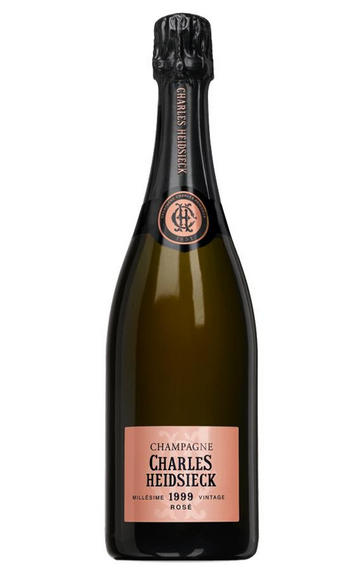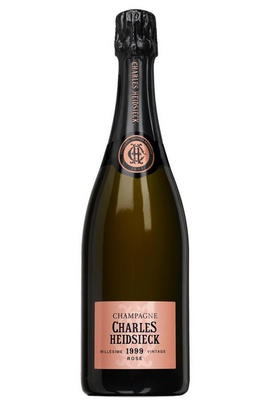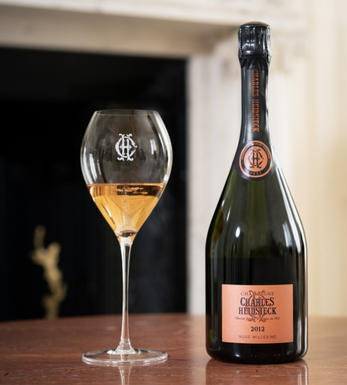
Champagne Charles Heidsieck, Rosé Reserve, Brut

Critics reviews
William Kelley - 30/04/2019
4/5 Stars - Decanter - Jan 2009
About this WINE

Champagne Charles Heidsieck
Charles-Camille Heidsieck set up his own Champagne company in 1851 and right from the start, the pursuit of the highest quality was always the company's main aim.
Based in the great city of Reims, Charles Heidsieck is one of the few houses that are able to use the fabulous chalk "crayères" cellars under the city. The "crayères" were hollowed out during Gallo-Roman times so that the chalk could be used for building. These cellars now provide a perfect atmosphere for the ageing of Champagne.
The entire Charles Heidsieck range is excellent from the Brut Réserve right up to the luxury cuvées Blanc des Millénaires and Champagne Charlie. A great believer in the ageability of fine Champagne, Charles Heidsieck ensure that their luxury cuvées drink well for decades.

Rosé Champagne
Rosé wines are produced by leaving the juice of red grapes to macerate on their skins for a brief time to extract pigments (natural colourings). However, Rosé Champagne is notable in that it is produced by the addition of a small percentage of red wine – usually Pinot Noir from the village of Bouzy – during blending.
Recommended Producers : Billecart Salmon (Elizabeth Salmon Rose), Ruinart

Champagne blend
Which grapes are included in the blend, and their proportion, is one of the key factors determining the style of most Champagnes. Three grapes are used - Pinot Noir, Chardonnay and Pinot Meunier.
26% of vineyards in Champagne are planted with Chardonnay and it performs best on the Côtes des Blancs and on the chalk slopes south of Epernay. It is relatively simple to grow, although it buds early and thus is susceptible to spring frosts. It produces lighter, fresher wines than those from Burgundy and gives finesse, fruit and elegance to the final blend. It is the sole grape in Blancs de Blancs, which are some of the richest long-lived Champagnes produced.
Pinot Noir accounts for nearly 40% of the plantings in Champagne and lies at the heart of most blends - it gives Champagne its body, structure, strength and grip. It is planted across Champagne and particularly so in the southern Aube district.
The final component is Pinot Meunier and this constitutes nearly 35% of the plantings. Its durability and resistance to spring frosts make the Marne Valley, a notorious frost pocket, its natural home. It ripens well in poor years and produces a soft, fruity style of wine that is ideal for blending with the more assertive flavours of Pinot Noir. Producers allege that Pinot Meunier lacks ageing potential, but this does not deter Krug from including around 15% of it in their final blends.


Buying options
Add to wishlist
Description
Charles-Camille Heidsieck set up his own Champagne company in 1851 and, right from the start, pursued the highest quality. Based in the great city of Reims, the House is a great believer in the ageability of fine Champagne, ensuring that its luxury cuvées drink well for decades.
The palest of rosés made with the addition of 7% red wine from the great villages of Ambonnay and Bouzy lending a delicate copper tint. The nose is rich with yeast and brioche notes; red fruits (fresh strawberry and raspberry) not evident at first, increase with time in the glass. There is a similar profile on the palate with almost chalk/mineral and citrus notes and red fruits again increasing over time. A very elegant, subtle rosé, drinking beautifully now, but which I suspect will gain further weight over the next year or so.
Simon Field MW, Champagne Buyer
wine at a glance
Delivery and quality guarantee